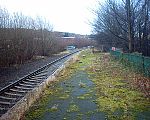Birley Old Hall
Country houses in South YorkshireGrade II listed buildings in SheffieldHistory of SheffieldHouses completed in 1705Houses in Sheffield ... and 1 more
Medieval architecture

Birley Old Hall is a small English country house situated in the Birley Edge area of the City of Sheffield, England. The hall stands in an exposed situation at almost 200 metres above sea level on Edge Lane, some six km NW of the city centre and has been designated a Grade II listed building by English Heritage as has the Falconry which stands in the garden.
Excerpt from the Wikipedia article Birley Old Hall (License: CC BY-SA 3.0, Authors, Images).Birley Old Hall
Edge Lane, Sheffield Birley Edge
Geographical coordinates (GPS) Address Nearby Places Show on map
Geographical coordinates (GPS)
| Latitude | Longitude |
|---|---|
| N 53.430472 ° | E -1.50455 ° |
Address
Edge Lane
Edge Lane
S6 1FJ Sheffield, Birley Edge
England, United Kingdom
Open on Google Maps






